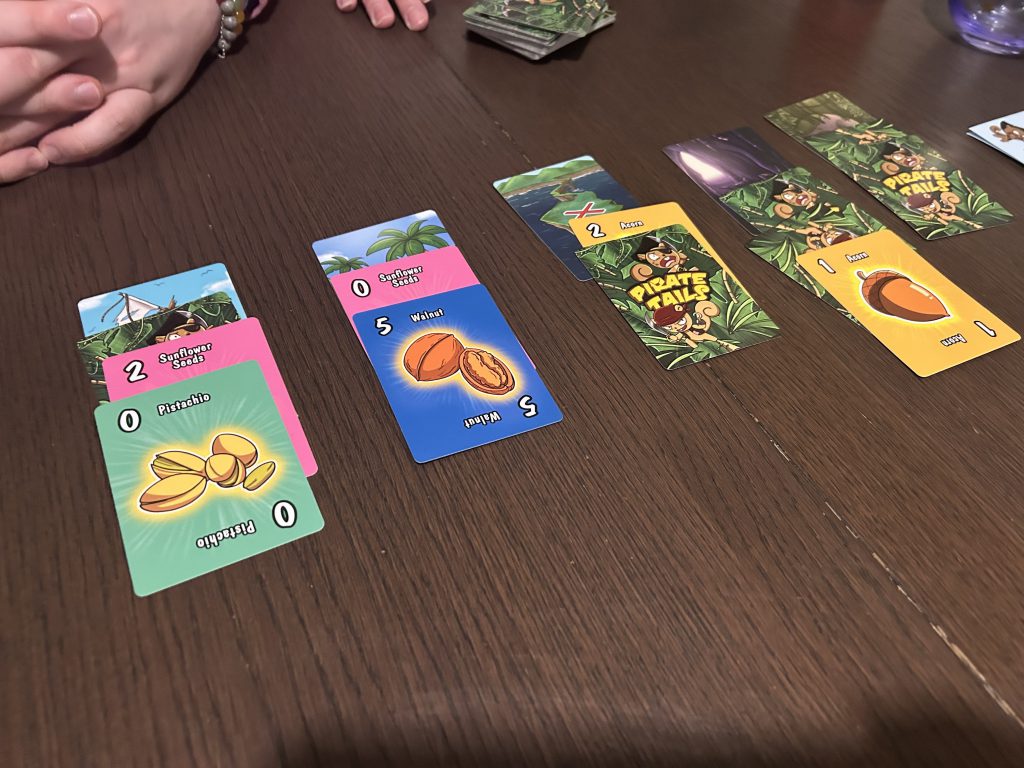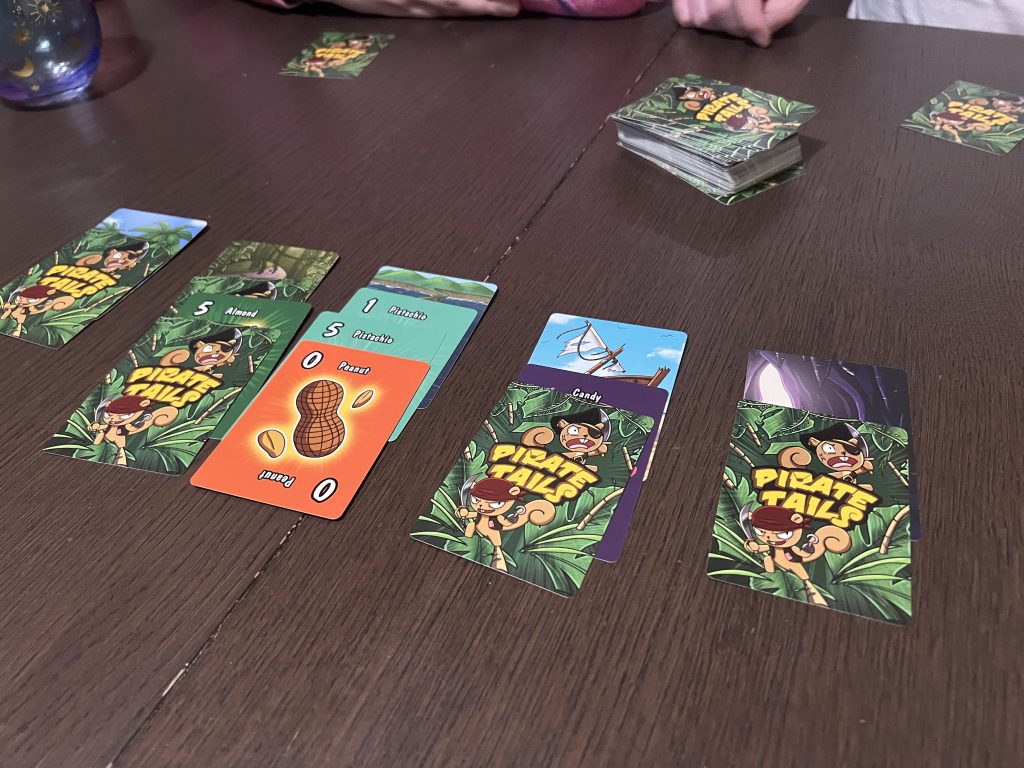Pirate Tails is all about remembering what you’ve buried
Squirrels and pirates have, as it turns out, more than a few things in common. In Pirate Tails you play as pirate squirrels, taking turns to bank, hide or dump cards before grabbing a stash and trying to get the best horde each round.
We’ve been blasting through a lot of shorter, family-appropriate, approachable games of late, and Pirate Tails was a standout from the most recent batch. While the theming — pirate squirrels — is not integral to the gameplay, it does give a fun theme that lends itself well to the style of play: Pirate Tails is a set collection game, one with some pretty simple rules and really short turns.
Setting up for a round is incredibly simple. You set out the five hiding spot cards, face-up, then create a deck of nut cards and candy cards depending on the number of players. For three or four players (which is kind of the ideal) you add two sets of nuts (a group of eight cards each) and two candy cards, you also remove hiding spots until they equal the player count. If you have two players then you set up as though there are three players, but only two of the hiding spots are raided in play. Raiding, and hiding spots is something that I’ll explain in a moment, but I will mention before that for a five-player variant (which we played) you include all cards, however, each hiding place can only have four cards, rather than five, stacked on it before players can no longer place there.

On a player’s turn they can either raid a hiding spot or ‘search for nuts’. Raiding takes them out of the round, but secures them every card in a hiding space. Searching for nuts, however, adds nuts to the hiding spots and their bank. For that, they pick a face-down from the deck, and then either place it face-down in front of them, face-down on a hiding spot or face-up on a hiding spot. They then draw a second card and do one of the two remaining actions (not repeating their use of a hiding spot), and then they draw a third card and perform their final of the three actions, once again, not placing the card in the same hiding spot if that’s their final action. Play then continues in a direction until the player-from last has raided (forcing the last player to have to raid), with players only able to have five cards on each hiding spot (four in a five player game). This means that most rounds only have play circle the table a couple of times before people tally scores.
Tallying scores is where the strategy comes to Pirate Tails. If you have one card of a set then you score no points, if you have two then you bank the lower number in points, if you have three you get the middle score and if you have four or more then you get the largest number. There are also bonus points based on candies, if you’ve got one or two then they’re worth five points each, any more and the whole stack is useless.

With this in mind, it becomes incredibly important to start building a set on your first go and being very careful where you place your face-down and face-up cards. Maybe you want to line up a few walnuts so you can raid it before others? Maybe you want to litter the lanes with pistachios as you already have two in hand and want to make sure you get at least one more. There’s a fun note in Pirate Tails‘ rules that states that both squirrels and pirates have a tendency to forget where they bury their treasures — that’s true here, if you get distracted by the face-up cards then it’s very easy to forget where you placed the cards you were squirrelling away to raid later… and that’s thematic and fun.
In five-player, with that four-cards-in-a-pile rule, it does feel like there’s barely any time to strategise, and so a single candy card was enough to have anybody win a round, but with some house rules (like longer rounds) there could be some real mischief at play here.
Pirate Tails is available now from this website.
Comments are closed.